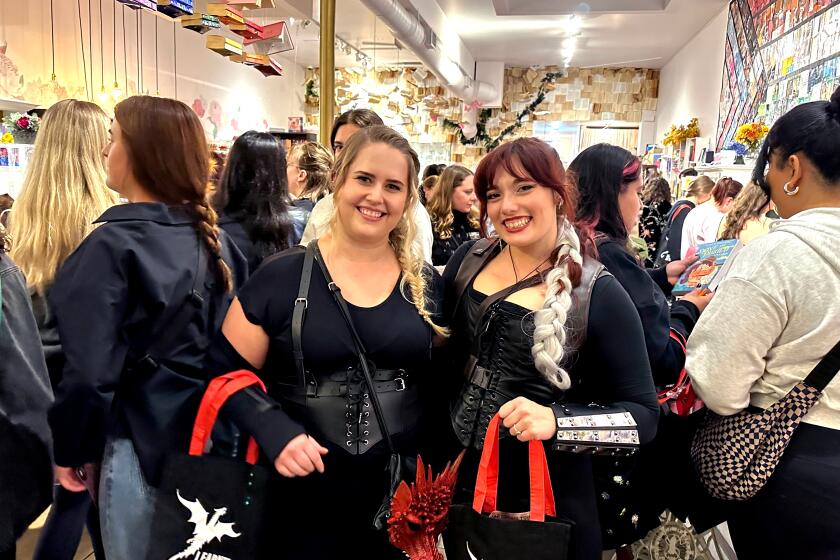Eloise McGraw; Award-Winning Children’s Author
- Share via
Eloise Jarvis McGraw, an award-winning author of mysteries, fantasy and historical fiction for children, died Nov. 30 in Portland, Ore. She was 84.
Among her best-known titles were “The Moorchild,” “Moccasin Trail” and “The Golden Goblet.” She was also co-author of the 40th book in the “Wizard of Oz” series, “Merry-Go-Round in Oz.”
McGraw, who lived in Lake Oswego, Ore., wrote 19 books for children, most of them aimed at the 10-14 age group. Eight of her novels were Junior Literary Guild selections and three were Newbery Honor books. She also won an Edgar from the Mystery Writers of America and a Lewis Carroll Shelf Award.
Critics often praised her meticulous research, which brought convincing detail to her characters and settings. “Sound book research can not only expand your education in all directions; it can keep you from making a fool of yourself,” she wrote in Writer magazine in 1997.
Her searches led her to dusty archives to find old stagecoach schedules or maps showing how many walking miles Hastings was from Canterbury in 1066 England.
For “The Striped Ships,” a 1991 novel about a Saxon girl who loses her parents in the Norman invasion of 1066 and eventually works on the Bayeux tapestry, she went far beyond book research to actually copy a scene from the tapestry and embroider it herself.
After 200 hours of embroidering, she learned that it was not one’s back that grows sore from the labor but the fingertips--and only while stitching the outline. Thus in the book, protagonist Juliana’s fingertips ache from the work.
Even McGraw conceded that “as research this was going overboard . . . but I enjoyed every minute.”
Her painstaking research extended to her fantasy writing because she believed that fairy tales “must seem more real than real.”
In her Newbery-winning 1996 book, “The Moorchild,” McGraw wove the story of the “Folk,” little people who dwell in caverns beneath the moors. The Moorfolk played bagpipes, a trait that impelled McGraw to call her chamber of commerce and obtain the phone number for a local bagpipe band. One of the band members let her study the instrument up close and answered her questions about how difficult it would be to play, especially for a child--or, as in McGraw’s case, a creature with elfin hands.
A reviewer for Horn Book Magazine praised the novel for its “elegant language, engrossing plot, engaging characters and a richly tactile setting.”
McGraw was an only child, born in Houston in 1915. She grew up in Oklahoma City but later lived in Missouri, Ohio and California before moving to Oregon more than 40 years ago.
She was hooked on writing at age 8, when she produced her first story. She also loved art, her major at Principia College in Illinois. She went on to graduate studies in painting and sculpture at the University of Oklahoma, University of Colorado and Museum Art School in Portland and taught portrait and figure painting briefly. She illustrated the covers of several of her books.
She began to write novels in 1949 while living in San Diego, where her husband was a newspaper reporter. William Corbin McGraw later became, like his wife, an award-winning children’s author. He died last year at 83.
McGraw is survived by children Peter and Lauren, five grandchildren and two great-grandchildren.
More to Read
Sign up for our Book Club newsletter
Get the latest news, events and more from the Los Angeles Times Book Club, and help us get L.A. reading and talking.
You may occasionally receive promotional content from the Los Angeles Times.








